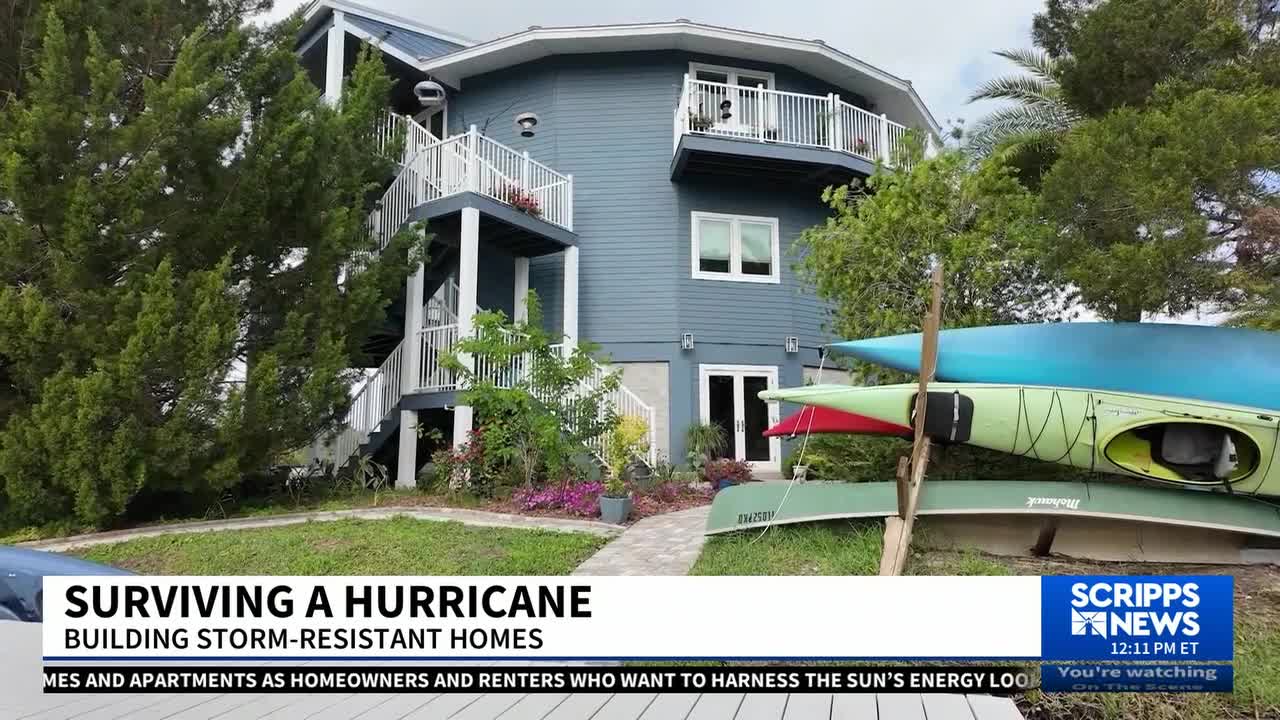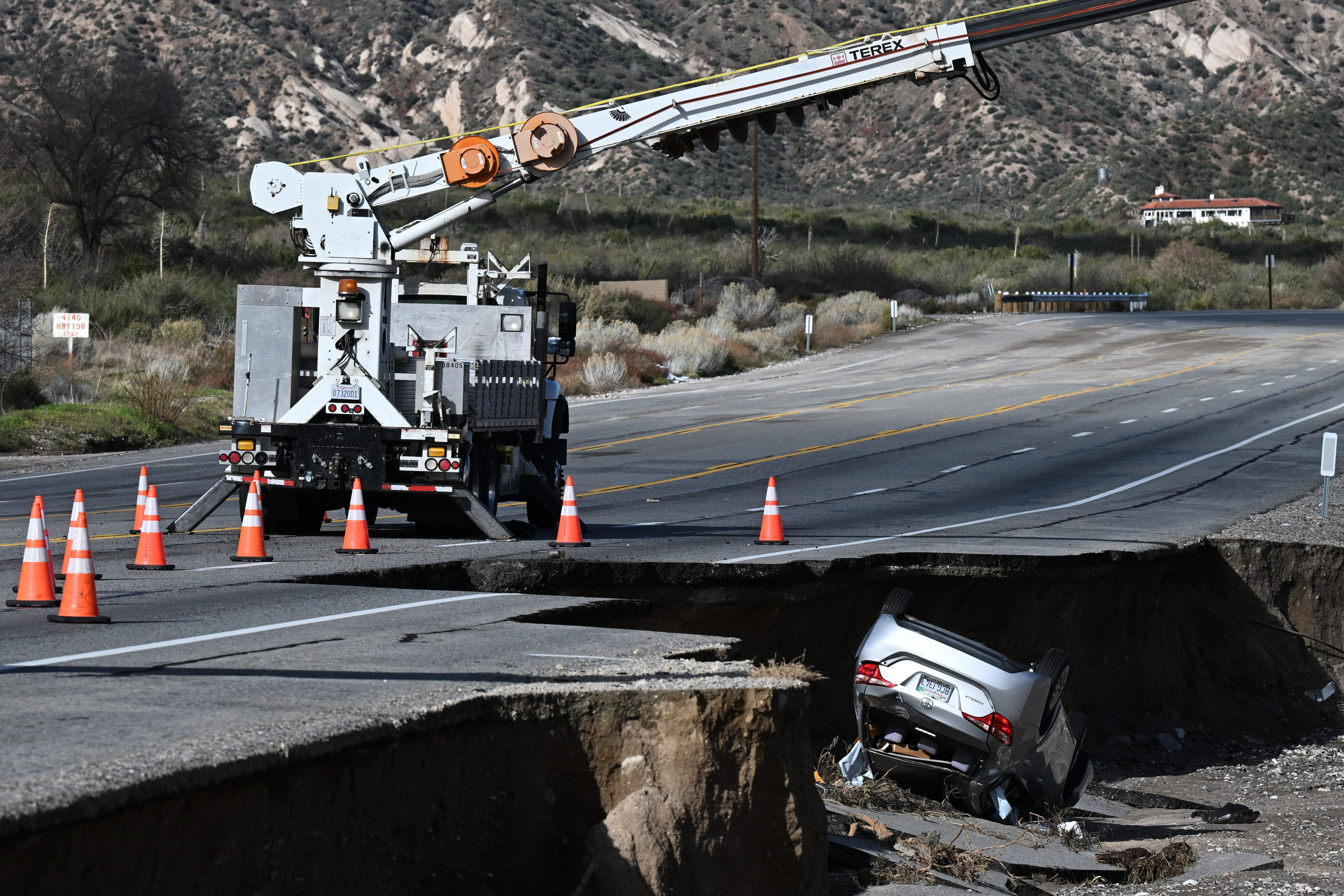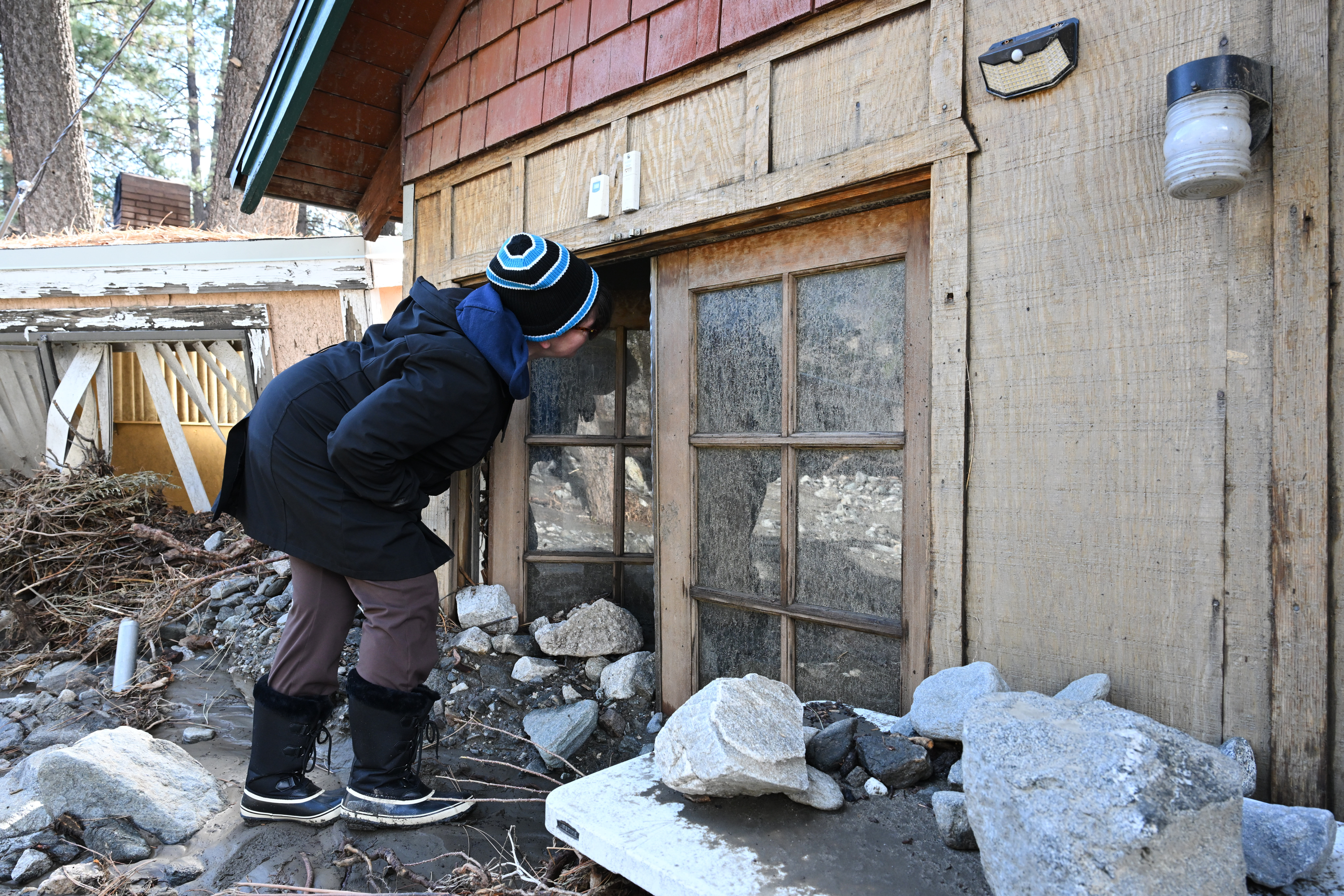With the Atlantic hurricane season beginning June 1, forecasters warn it could an above average year — potentially producing up to 19 named storms and 5 major hurricanes, according to the National Oceanic and Atmospheric Administration. As storms grow stronger and more frequent, a growing number of homeowners along the U.S. coast are taking a proactive approach: building smarter, more resilient homes designed to withstand the forces of nature.
In Crystal River, Florida, Gene Tener’s home stands out in more ways than one. “Initially, it was,” Tener said, when asked if his house drew curiosity from neighbors. That’s because his home, unlike most others in the area, is round — a design that does more than just offer panoramic views.
The house has already endured six hurricanes in five years, including Hurricane Helene, a Category 4 storm that struck the Gulf Coast in September. Its aerodynamic shape is built to reduce wind pressure by 30%. Inside, trusses fan out like spokes on a bicycle wheel, distributing storm forces to help keep the roof in place. “You worry about the wind blowing off the roof,” Tener said. “You worry about the rain. And you worry about flooding.”
Anchored deep into the ground, the home also includes flood vents to relieve water pressure and protect the foundation. “It will open up and it’ll lift like this,” Tener explained, demonstrating the vent system. With these features, the house is rated to withstand 190-mile-per-hour winds — a very strong Category 5 hurricane. “
The inspector, when he came and inspected, he says, ‘If we have a hurricane, I’m coming here,’” Tener said.
A Different Kind of Builder
Tener’s home was built by Deltec Homes, a family-run company based in Asheville, North Carolina. The company has built more than 5,000 homes around the world, many designed specifically for resilience in extreme weather.
“We’re taking that great shape and we’re pairing it with amazing materials,” said Matt Oblinsky, Deltec’s lead engineer. The company estimates their homes cost about 10% more than traditional construction, but they often fare far better in storms. “We’re 99% successful,” Oblinsky said of the homes’ performance in past hurricanes. But he adds a note of caution: “There’s no such thing as a hurricane-proof home. We’re very careful to say these are hurricane-resistant.”
The Climate Connection
Research from Climate Central shows that human caused climate change is warming ocean waters which is fueling stronger and more intense hurricanes. Stronger storms often lead to more damage and higher insurance rates.
Testing the Limits
At the Insurance Institute for Business and Home Safety (IBHS) in South Carolina, engineers are working to make both new and existing homes more resilient. Using a massive wall of over 100 fans, the institute can simulate a Category 3 hurricane to test how well homes hold up under intense conditions.
“You build homes and then you destroy them?,” Climate Central Correspondent Ben Tracy asked during a visit to the facility. “Exactly, yes,” replied Sarah Dillingham, senior meteorologist at IBHS. “And we do it all in the name of science.” The tests often reveal the vulnerabilities that can lead to catastrophic damage. “Your roof is your first line of defense,” Dillingham said. “And it is what helps hold everything together in your home.”
She also recommends storm-ready upgrades like high-impact windows, reinforced doors, and — crucially — wind-rated garage doors. “Your garage door is your biggest opening of your home,” she said. “Because when wind gets in, it will find the weakest link.”
Long-Term Savings
For Tener, investing in a storm-resilient home has paid off financially as well. He even canceled his optional flood insurance saving him $12,000 per year. “You put a little more money into it and it lasts forever,” he said. “It pays off in the long run.”











